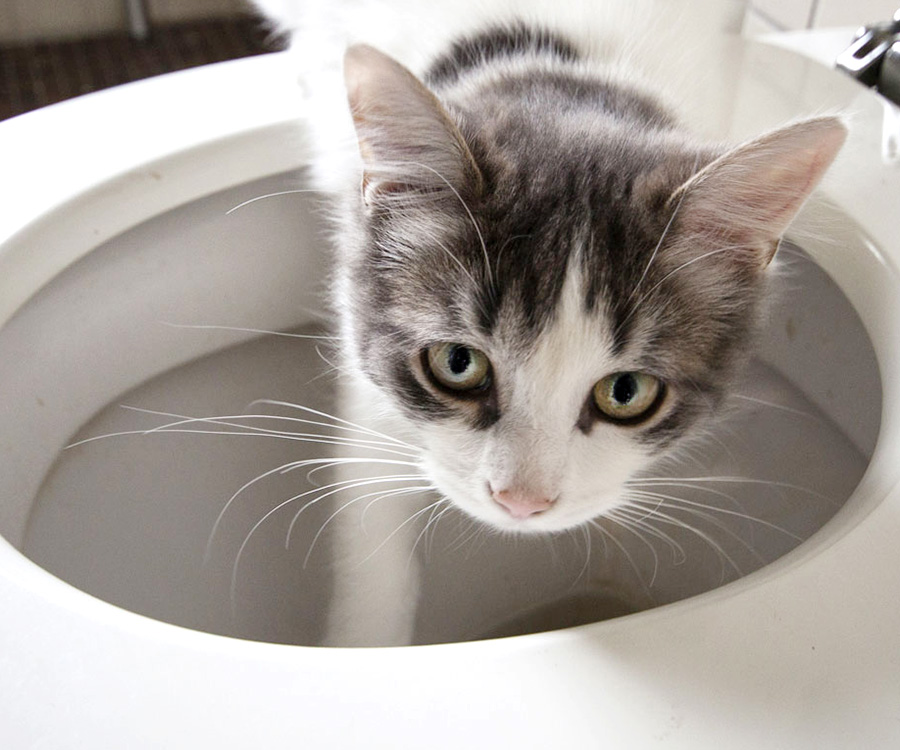Avoid Flush Cat Poop Down Your Toilet - Safeguard Your Pipes System
Avoid Flush Cat Poop Down Your Toilet - Safeguard Your Pipes System
Blog Article
What are your ideas about How to Dispose of Cat Poop and Litter Without Plastic Bags?

Introduction
As cat proprietors, it's vital to be mindful of just how we throw away our feline close friends' waste. While it may appear hassle-free to purge feline poop down the toilet, this practice can have detrimental repercussions for both the environment and human health and wellness.
Alternatives to Flushing
Luckily, there are much safer and much more liable ways to get rid of feline poop. Take into consideration the complying with alternatives:
1. Scoop and Dispose in Trash
The most usual technique of throwing away pet cat poop is to scoop it into an eco-friendly bag and toss it in the garbage. Make sure to make use of a devoted litter scoop and deal with the waste quickly.
2. Usage Biodegradable Litter
Go with biodegradable cat trash made from products such as corn or wheat. These clutters are environmentally friendly and can be safely gotten rid of in the trash.
3. Bury in the Yard
If you have a backyard, think about hiding pet cat waste in a designated location away from vegetable gardens and water sources. Make sure to dig deep sufficient to prevent contamination of groundwater.
4. Install a Pet Waste Disposal System
Invest in an animal garbage disposal system specifically created for pet cat waste. These systems use enzymes to break down the waste, decreasing smell and environmental impact.
Health Risks
Along with environmental issues, purging cat waste can also position health and wellness dangers to human beings. Feline feces may contain Toxoplasma gondii, a bloodsucker that can trigger toxoplasmosis-- a potentially severe disease, particularly for expecting women and people with weakened immune systems.
Ecological Impact
Flushing pet cat poop introduces dangerous microorganisms and bloodsuckers into the water system, posturing a considerable threat to water environments. These pollutants can negatively impact marine life and compromise water top quality.
Conclusion
Liable pet possession extends beyond giving food and shelter-- it additionally includes appropriate waste administration. By refraining from flushing feline poop down the commode and opting for different disposal approaches, we can minimize our environmental impact and shield human health.
Why Can’t I Flush Cat Poop?
It Spreads a Parasite
Cats are frequently infected with a parasite called toxoplasma gondii. The parasite causes an infection called toxoplasmosis. It is usually harmless to cats. The parasite only uses cat poop as a host for its eggs. Otherwise, the cat’s immune system usually keeps the infection at low enough levels to maintain its own health. But it does not stop the develop of eggs. These eggs are tiny and surprisingly tough. They may survive for a year before they begin to grow. But that’s the problem.
Our wastewater system is not designed to deal with toxoplasmosis eggs. Instead, most eggs will flush from your toilet into sewers and wastewater management plants. After the sewage is treated for many other harmful things in it, it is typically released into local rivers, lakes, or oceans. Here, the toxoplasmosis eggs can find new hosts, including starfish, crabs, otters, and many other wildlife. For many, this is a significant risk to their health. Toxoplasmosis can also end up infecting water sources that are important for agriculture, which means our deer, pigs, and sheep can get infected too.
Is There Risk to Humans?
There can be a risk to human life from flushing cat poop down the toilet. If you do so, the parasites from your cat’s poop can end up in shellfish, game animals, or livestock. If this meat is then served raw or undercooked, the people who eat it can get sick.
In fact, according to the CDC, 40 million people in the United States are infected with toxoplasma gondii. They get it from exposure to infected seafood, or from some kind of cat poop contamination, like drinking from a stream that is contaminated or touching anything that has come into contact with cat poop. That includes just cleaning a cat litter box.
Most people who get infected with these parasites will not develop any symptoms. However, for pregnant women or for those with compromised immune systems, the parasite can cause severe health problems.
How to Handle Cat Poop
The best way to handle cat poop is actually to clean the box more often. The eggs that the parasite sheds will not become active until one to five days after the cat poops. That means that if you clean daily, you’re much less likely to come into direct contact with infectious eggs.
That said, always dispose of cat poop in the garbage and not down the toilet. Wash your hands before and after you clean the litter box, and bring the bag of poop right outside to your garbage bins.
https://trenchlesssolutionsusa.com/why-cant-i-flush-cat-poop/

I came across that blog posting about Can You Flush Cat Poop Down The Toilet? when doing a search on the search engines. Are you aware of somebody else who is occupied with Can You Flush Cat Poop Down The Toilet?? Take a moment to promote it. Thanks a bunch for your time. Come back soon.
Get Quote Report this page